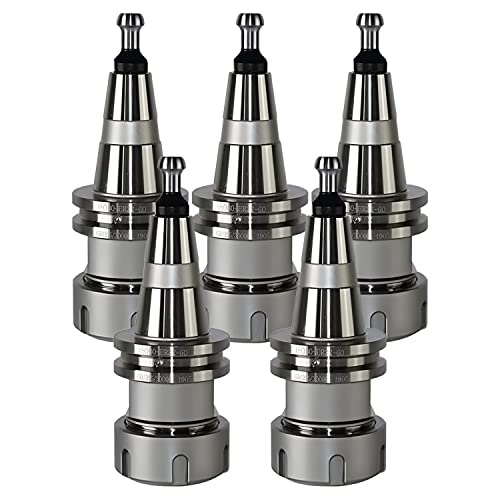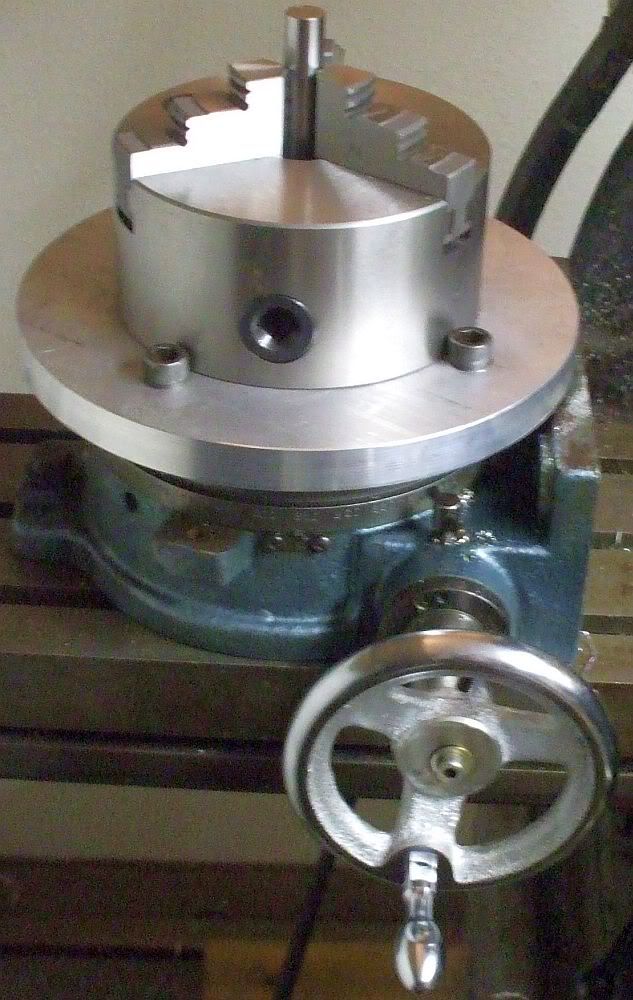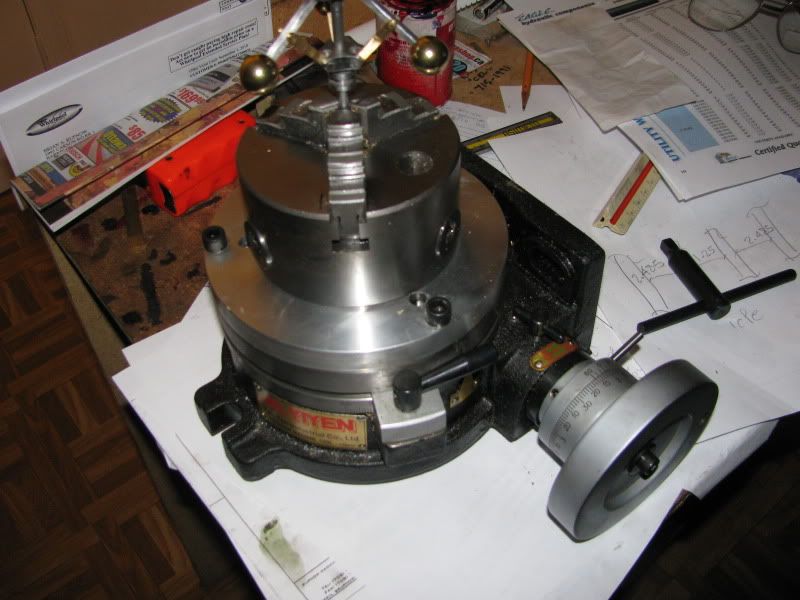I've put this up before but perhaps it's worth repeating. This is something I wrote for the members of our club...
Centering Work in the Four Jaw Chuck
Probably every machinist has his own pet way of doing it. My technique works
for me. Take whatever is useful and modify as you see fit.
To easily center work in the 4J, you'll need to make yourself two tools.
First, make a dedicated holder of some sort so you can mount a dial indicator
(DI) on the tool post (or directly to the compound) with its axis
perpendicular to the spindle axis. Adjust the DI so its plunger is vertically
aligned with the spindle axis. An easy way to do this is to put a pointed tip
on the DI plunger and align the point to a dead center in the headstock. The
idea is to make something that you can drop into place, already aligned, and
lock down in ten seconds or so. Leave the DI permanently mounted to this
holder. A cheap import DI (<$15) is fine since we'll be using this only for
comparative, not absolute, measurement.
While you could use a conventional adjustable magnetic DI holder, I strongly
recommend that you make a dedicated mount that is easily installed and removed.
A general maxim of machining is that you'll be much more likely to do something
'the right way' if setting up to do it is quick and simple. If it isn't you're
much more likely to try some half-a$$ed setup that doesn't work and ends up
damaging the tool, the work, or, worst of all, you.
The second tool to make is a clone of your 4J chuck wrench. We're going to be
adjusting two jaws at a time and it's infinitely easier to do if you can move
both jaws in and out in concert without having to swap the wrench from hole to
hole. It's another example of the maxim I mentioned above. The clone wrench
doesn't have to be anything fancy. Machine a square tenon to match the
existing wrench on the end of some suitable stock, and drill for a press-fit
cross bar. Use your existing wrench as a guide for dimensions. I've found
that, if there's not a lot of room on the back side of the lathe, making the
clone somewhat shorter than the supplied wrench is a good idea.
Ok, now for the procedure. Mount the work in the 4J and roughly center -
either by eye or by using the concentric circles scribed into the face of most
4Js. Snug the jaws down so the work is held securely. Turn the chuck so one
jaw is at the nine o'clock position as seen looking from the tailstock down
the spindle axis. Use the cross-slide to bring the DI up against the work and
reading about the middle of its range (e.g., about 0.5" on a 1" DI). Turn the
scale on the DI so its needle indicates zero. Now swing the chuck through 180
degrees. Unless you've got an impossibly good eye, the DI will now read
something other than zero. (For an example, let's say it reads 0.038.) Turn
the DI scale so the zero is halfway to this reading. (Move the scale so the
needle points to 0.019.)
Now, insert both chuck wrenches and adjust the jaws so the DI needle points to
zero. Swing the chuck 180 degrees and check the reading - it should be close
to zero.
[Aside: If the part you're centering has the same dimension in both jaw axes
(i.e., it's not rectangular), the DI zero you established above will also be
the zero for adjusting the other two jaws below - another advantage of this
technique.]
Repeat this entire process for the two other jaws. [What we're doing here is
treating the 4J as two two-jaw chucks. We can do this because the jaw pairs
are orthogonal and, to first order, adjustments of one pair will have very
little effect on the setting of the other pair.]
If you've been careful, the total runout on the part should now be only a few
thou. Depending on your esthetics and the part requirements, this may be good
enough. If not, repeat the entire process until the runout meets your needs.
After centering, check to ensure that all the jaws are clamped down tightly.
It's easy to leave one loose. If you have (left one loose), you may need to
rerun the centering procedure after you've tightened it.
With this procedure, you should be able to center something to +/-0.001" in
ten minutes on your first try. With not much practice, you can get that
number down to one or two minutes. Soon your three-jaw will be gathering
dust.
One of the most common uses of the 4J is for drilling/boring offset holes in
eccentrics (i.e. cam drivers for model engines). In this case, you aren't
centering the stock itself (as we were above) but rather need to center the
location of the hole.
First centerdrill the location of the hole in the milling machine. Mount the
stock in the 4J and roughly center this centerdrilled hole. [A fast way to do
this is to use the pointy end of an edge finder held in the tailstock drill
chuck.] Now you need a PUMP CENTER. This is a longish rod (mine is ~10"
long). At the tailstock end is a spring-loaded female center. At the
headstock end is a rigid male center. The male center goes in your
centerdrilled hole. The female center is supported by a dead center in the
tailstock and the tailstock is adjusted to lightly compress the spring. The
DI is made to bear on the rod near the male center. Using the procedure
outlined above, adjust the jaws until the DI shows little or no runout.
Voila, the location of the offset hole is now centered.






















![TurboCAD 2020 Designer [PC Download]](https://m.media-amazon.com/images/I/51UKfAHH1LL._SL500_.jpg)

![DreamPlan Home Design and Landscaping Software Free for Windows [PC Download]](https://m.media-amazon.com/images/I/51kvZH2dVLL._SL500_.jpg)














































